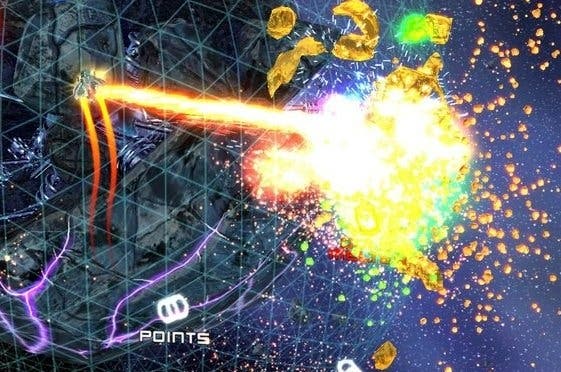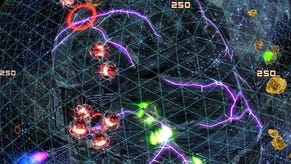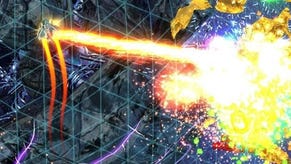Housemarque testing Super Stardust Ultra for Morpheus VR
"Technical tests are ongoing".
Two words snuck into the factsheet Sony provided reviewers for the excellent Super Stardust Ultra, provoking plenty of excitement here at Digital Foundry: "Morpheus Ready." With the platform holder known to be revealing more of its virtual reality plans at the Game Developers Conference in a couple of weeks, we contacted PR asking for more details and perhaps an early hands-on.
Clarification emerged this afternoon concerning the goings on at Housemarque's Helsinki lair:
"Housemarque are fortunate enough to have had access to Morpheus development kits and have been experimenting with the technology using their latest title, Super Stardust Ultra," a Sony statement read.
"At this time, the technical tests are ongoing and it is too early to say whether Super Stardust Ultra will become Morpheus compatible at some stage, or whether the team will apply the technical knowledge to future titles."
Our take? Based on the technical make-up of Super Stardust Ultra, there's a highly compelling case for making the brilliant shooter one of the first wave of Sony's VR titles. From a technological perspective, Morpheus VR titles have to tick a number of boxes in order to produce a viable VR experience.
- Resolution: VR titles require native resolution rendering - in the current Morpheus kits sent out to developers, that's 1080p.
- Frame-rate: Titles need to run at a minimum of 60fps (it's unknown whether the display in the final kit will settle on a higher refresh).
- Stereo 3D: Games also need to render individual viewpoints for each eye, meaning that geometry set-up is processed twice.
- Anti-aliasing: With the player's eyes right on front of the display, jaggies and pixel-pop are somewhat exaggerated. VR titles require really good anti-aliasing.
Additional analysis: Super Stardust Ultra: two-player/four-player split-screen performance
Super Stardust Ultra is significant in that it is one of the few PlayStation 4 titles that convincingly makes the grade in every single one of those requirements. It runs at 1080p60, it already has stereoscopic 3D support, and while the effect is quite subtle and sometimes difficult to discern on a standard HDTV, we're pretty sure that the title features 4x multi-sampling anti-aliasing too. Some might consider that overkill, but if the game was developed with VR as a consideration, its inclusion makes sense.
Most people look at VR titles and only really consider the first person perspective applications of the technology. However, there's a great case to make for immersion in other game types too - as borne out by the integration of Oculus Rift DK2 support into a demo of Jeff Minter's TxK. In the case of the Super Stardust, imagine playing the game in your own personal IMAX theatre - it's a compelling proposition, made all the more mouthwatering when you consider that both PS3 and PS4 versions of the game already offer an unmissable experience for those with stereo 3D displays.
We checked out Super Stardust Ultra on PS4 last week, finding a release that was essentially a smartened-up version of on an already brilliant game, with a modest selection of feature upgrades. But from our testing, it's clear that all the technological building blocks are in place to allow for an excellent VR experience - something we hope to see emerging from Housemarque's labs in the fullness of time.





